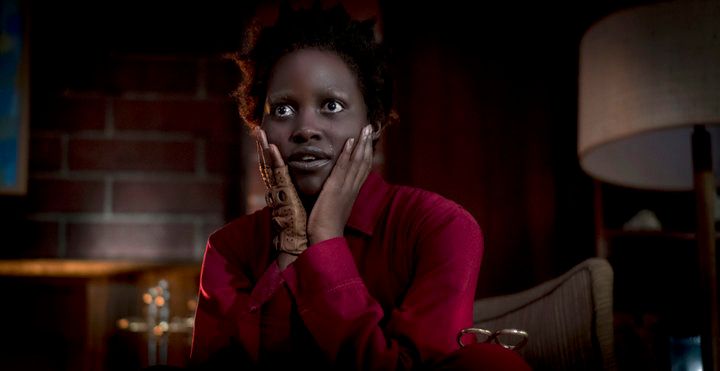Disability advocates are criticizing Lupita Nyong’o for comments she made about her character in Jordan Peele’s “Us.”
Earlier this month, the Oscar-winning actress told The New York Times that Robert F. Kennedy Jr. was the inspiration for the creepy voice she uses for her character, Red, who is portrayed as a villain in most of the film. Kennedy has spasmodic dysphonia, a neurological disorder that causes involuntary spasms of the larynx.
The article explains that Peele, who wrote and directed the film, wanted Red to have “a scratchy voice, as if withered from lack of use,” and when Nyong’o attended a fashion event where Kennedy was speaking, the seed was planted.

In a video published by Variety on Monday, the actress elaborated on her decision.
“I was inspired by the condition spasmodic dysphonia,” Nyong’o told Variety. “Which is a condition that comes about from a trauma, sometimes emotional, sometimes physical, and it creates this spasming in your vocal cords that leads to an irregular flow of air.”
Kim Kuman, the executive director of the National Spasmodic Dysphonia Association, told the New York Post that “stress is going to aggravate any health issue” and isn’t necessarily the core cause of the condition.
“We want to ensure people understand that there is a neurological cause for spasmodic dysphonia. That is not emotional or psychological. They did not do anything to cause their voice to change,” Kuman told HuffPost.
The Variety video also features Nyong’o’s co-stars describing Red’s voice as “freaking” them out, “scary” and “out there.” Ian Cooper, a producer for “Us,” even noted that he’d avoid making small talk with Nyong’o on days she played the character because she would use that voice.
Nyong’o’s artistic choice carries real-life consequences for people with spasmodic dysphonia and other disabilities.
“One of the toughest parts of having a disability is that people make assumptions based on the way you walk, talk or act, sometimes with little understanding of what is causing it,” the NSDA said in a lengthy statement on its website. “We understand that hearing the unique sound caused by symptoms of spasmodic dysphonia was the spark of inspiration for the voice of this character. What is difficult for us, and for the thousands of people living with spasmodic dysphonia, is this association to their voice with what might be considered haunting.”
Nyong’o did not immediately reply to HuffPost’s request for comment.
“One of the toughest parts of having a disability is that people make assumptions based on the way you walk, talk or act.”
- National Spasmodic Dysphonia Association
Jennifer Laszlo Mizrahi, president of RespectAbility, a nonprofit group that fights stigmas and advances opportunities for people with disabilities, echoed NSDA’s concerns.
“Connecting disabilities to characters who are evil further marginalizes people with disabilities who also have significant abilities and want to contribute to their communities just like anyone else,” Mizrahi said in a statement.
Kennedy himself didn’t seem upset that he was the inspiration for Nyong’o’s character and told Good Morning America that he was grateful that the actress put a “spotlight on an injury that’s been starved for attention.”
Yet, according to a tweet he sent out before speaking to GMA, he was somewhat confused by the whole ordeal.
Many responded that it wasn’t exactly an honor.
Other people with disabilities and advocates also expressed their dismay with Nyong’o on Twitter.
Using disabilities in film to signify that a character is evil is something the disability community has been trying to combat for years.
The “Road Map for Inclusion,” a new report funded by the Ford Foundation that details the media’s failure to represent people with disabilities and gives recommendations for better inclusion, also mentions hurtful and stereotypical portrayals of people with disabilities. The report cites examples like the Joker in “The Dark Knight,” Voldemort in the Harry Potter movies, Dr. Poison in “Wonder Woman” and a whole bunch of bad guys in the James Bond franchise.
“This stereotype plays on people’s inherent discomfort with those who do not look the same as them, telling them that disfigurement—and disability, in general—makes characters revolting and morally wrong and reinforcing the notion that ‘we should be afraid of people whose faces and bodies are different from our own,’” the report states.
CORRECTION: A previous version of this article incorrectly stated that Kuman spoke to IndieWire. She spoke to the New York Post. It has also been updated to clarify her remarks about spasmodic dysphonia.
